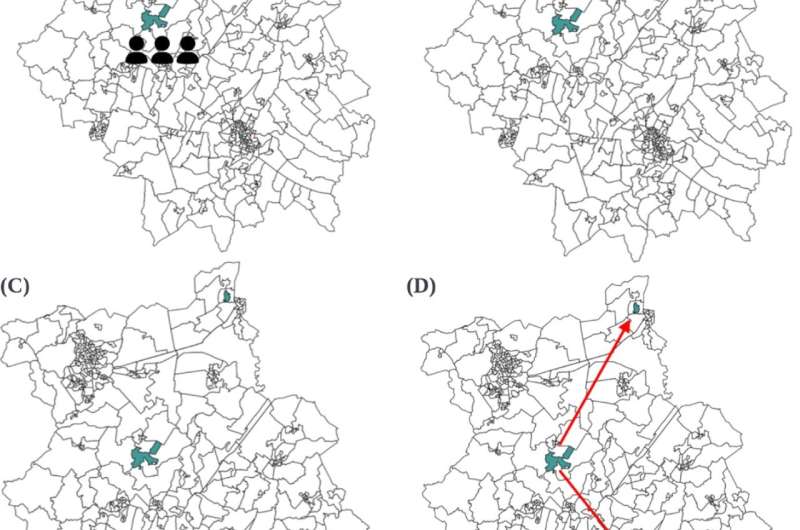This article has been reviewed according to Science X's editorial process and policies. Editors have highlighted the following attributes while ensuring the content's credibility:
fact-checked
trusted source
proofread
Areas with more illegal market opportunities more likely to be targeted by organized crime, study shows

Communities with higher-than-average illegal market opportunities (proxied by drug-related activities) are more likely to be targeted by organized crime groups, a new study shows.
Criminals in the gangs are also more likely to target urban communities, according to the analysis of police data.
The study, by Paolo Campana from the University of Cambridge and Cecilia Meneghini from the University of Exeter, is published in the journal Trends in Organized Crime.
Researchers reconstructed the movement of organized crime members using police data on 41 months' worth of recorded crime events.
The anonymous crime incident data was recorded by Cambridgeshire Constabulary between May 2018 and October 2021. It includes information on all crime events in which organized crime members appear as either suspects or victims.
Experts found slightly less than half of the communities in Cambridgeshire were impacted by the movement of organized crime.
Researchers focused on 121 organized crime members who offended in multiple areas. They analyzed information on 1,073 crime events committed by these offenders: 22.4% were drug-related crime events, 16.3% concern thefts and burglaries, 6.2% robberies, 7.9% criminal damage, 13.2% relate to violent crime with injury, 7.4% to violent crime without injury and 14% to threats and harassment.
Organized crime groups were more prevalent in urban rather than rural communities, and towns and cities had a higher level of criminality overall. Organized crime offenders were more likely to move into communities within close geographical distance, or alternatively, between the major urban areas of the county.
Through analysis of these networks, the researchers found that some of the most active communities appear to act both as source and target locations of organized crime activities, receiving an inflow of organized crime offenders whose main area of operation is elsewhere and acting as turf communities for organized crime members who also offend elsewhere. Other communities had a clearer role as either a stronghold of organized crime activities or as a target of organized crime expansion.
Dr. Meneghini said, "Our results suggest organized crime offenders have their turf in the most deprived and criminally active communities of the county, and they tend to move into areas where illegal market opportunities are present and with a similar socio-demographic profile. Such movement is also more likely to happen between urban communities."
Dr. Campana added, "Organized crime group members appear to target communities that have higher-than-average illegal market opportunities. The presence of economic market opportunities makes a community attractive to organized crime. There is strong evidence that income deprivation increases the probability of a territory sending organized crime members while its impact on being a receiver of such movement is less clear. When moving, organized crime group members select territories that are similar to their own. Jumping into the 'unknown' may be seen as too difficult or too risky."
Experts used network analysis to analyze movement. Their approach can be scaled up to study transnational, long-distance movement as well as scaled down, focusing on smaller geographical areas.
This could allow law enforcement agencies and policymakers to map the movement of organized crime members across territories, and—if repeated over time—to be able to pick up emerging trends.
More information: Paolo Campana et al, Organised crime movement across local communities: A network approach, Trends in Organized Crime (2024). DOI: 10.1007/s12117-024-09531-7
Provided by University of Exeter





















